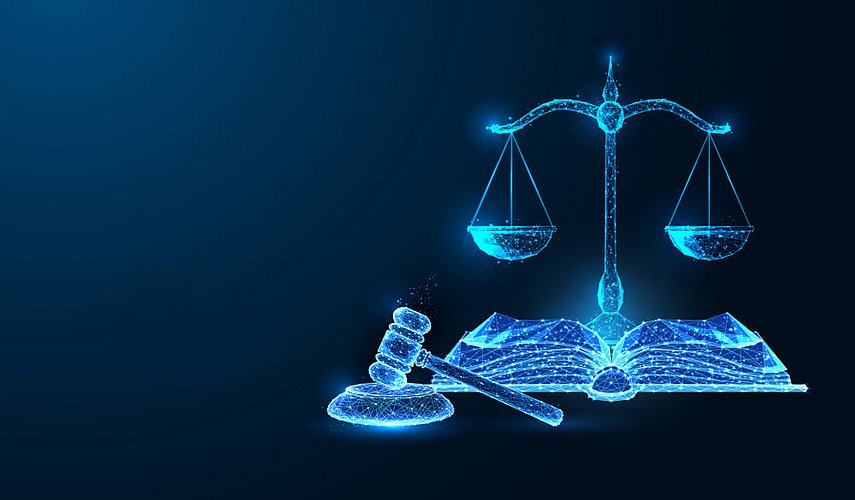Far-Reaching Reform of German Copyright Law based on European Requirements
Update IP, Media & Technology No. 35
The German federal government has initiated the most extensive reform of copyright law within the last two decades. The draft law "zur Anpassung des Urheberrechts an die Erfordernisse des digitalen Binnenmarktes" [to adapt copyright law to the requirements of the digital single market] passed on February 3, 2021 implements two European directives. The reform is necessary in order to be able to counter the effects of the rapid further development of media technologies on works protected by copyright and is intended to newly regulate the legal relationship between authors, Internet platforms and users. At its core lies the highly controversial regulation of extensive copyright responsibility of the operators of so-called upload platforms for the content with copyright protected content uploaded by their users.
I. Background
The draft law implements the Directive on Copyright in the Digital Single Market (Reg. [EU] 2019/790) and the Online SatCab Directive (Reg. [EU] 2019/789), both of which arose due to a recognized need for reform with regard to the constantly changing digital society.
First and foremost, the first directive mentioned is decisive. This is because this has the greatest influence on this draft law due to its comprehensive legal mandate to adapt the copyright provisions of the European Member States. As a result, the draft tries to find answers to a wide range of copyright issues, for example, by establishing the copyright responsibility of upload platforms including various exceptions, new regulations with regard to collecting societies and publishers, as well as various other individual regulations, such as easier access to cultural heritage. Within the meaning of the above-mentioned Directive, the draft is also focused on cross-border access to broadcast content for the European population and, in particular, aims to reorganize the online exploitation of broadcast programs. Finally, the draft reacts to legal changes resulting from a ruling of the European Court of Justice (ECJ). According to this, a provision of copyright law for so-called free use without the consent of the author is not compatible with Union law.
In summary, both creators, rights exploiters and also consumers should be able to benefit to the same extent from the new regulations by means of a fair balance of interests. The main new provisions of the draft are presented in detail below.
II. Copyright responsibility of upload platforms
First of all, a new and independent law (Urheberrechts-Diensteanbieter-Gesetz [German Copyright Service Provider Act] (UrhDaG-E)) should regulate the copyright responsibility of upload platforms for the content uploaded by their users. This affects service providers whose main purpose is to store large amounts of copyrighted content uploaded by third parties and make it publicly accessible, to organize such content in order to ultimately gain profits (Section 2(1) UrhDaG-E). This is particularly orientated towards the large social media platforms such as YouTube or Facebook.
It is crucial that these platforms should be made responsible for the public reproduction of the copyrighted content provided by their users. It is therefore envisaged that they can only exempt themselves from liability with regard to the unlawful use of such uploaded material if they have complied with the newly regulated due diligence obligations. These obligations include the acquisition of licenses for the reproduction of the protected works (Section 4 UrhDaG-E). If, on the other hand, protected content is not licensed and use is neither legally nor contractually permitted, the service providers are to be obligated to block the corresponding content (Sections 7 and 9 UrhDaG-E). In summary, a “take-down procedure” is to be established, which is intended to prevent the widespread practice of copying protected content on the Internet by private individuals. However, it is precisely this point that has been of major contention since the debate about the underlying EU copyright reform (Article 17 Reg. [EU] 2019/790) and has since caused major protests among interest groups and the civil population itself. Above all, fears have been expressed with regard to "overblocking" due to "upload filters" based on algorithms, which the platform operators will supposedly use to block in advance as much content as possible instead of having to deal with the diverse content in individual cases.
In addition, the draft - as an instrument to further strengthen the rights of authors - contains a claim for “appropriate” remuneration for the licensed uses vis-à-vis the platforms (Section 4(3) UrhDaG-E). Such remuneration should also be due for legally permitted uses (Section 5(2) UrhDaG-E). In addition, a complaint procedure is provided for disputes between platforms, rights holders and users (Sections 14, 15 UrhDaG-E).
III. Exceptions for creative purposes and “pre-flagging” procedures
In the context of the discussion on the over-blocking of content, the feared demise of the so-called meme culture also caused criticism. In response to this, the draft provides for various regulations to protect artistic freedom and social communication. For this purpose, exceptions are initially provided for the public reproduction of protected works for the purposes of quotation, caricature, parody and pastiche (Sec. 5 (1) UrhDaG-E). German law has not provided any express legal permission for these purposes so far. Although corresponding forms of creative discussion have also been largely permitted up until now, these have so far been classified under the rather indefinite element of "free use" in German copyright law (Section 24 UrhG [German copyright act], old version). However, this standard has to be repealed as a result of the ECJ's decision in the “Metall auf Metall” case (ruling of July 29, 2019, case no. C 476/17). Therefore, the draft now provides for explicit statutory permission for the purposes of caricature, parody and especially pastiche. However, this permission is limited by the fact that the creative use must be justified by a special purpose in terms of its specific scope (Section 51a UrhG-E [draft of the German Copyright Act]). It remains to be seen how courts will interpret this requirement.
There are also special rules for the public reproduction (Section 9-12 UrhDaG-E) of works whose use is "presumably permitted". This applies, for example, to content that contains less than half of the work of a third party or is to be qualified as a minor use of another work (Section 9(2) UrhDaG-E). Certain de minimis limitations are provided for such minor uses: for example, videos and soundtracks may last a maximum of 15 seconds, texts may have a maximum of 160 characters and images may have a data size of no more than 125 kilobytes (Section 10 UrhDaG-E). However, these limits only apply if the use is not for commercial purposes. In this context, criticism has been made that the values are too low, therefore limiting creators too much in their work.
In addition, the fact of a “presumed permission” for the publication of protected works can also be asserted in order to avoid blocking in this way. For this, the respective content must be marked accordingly by the user. This so-called pre-flagging procedure, however, is only intended to affect user-generated content that falls victim to automated blocking and does not correspond to minor use, but is aimed at one of the initially named creative purposes (quotation, etc.) (Section 11(1) No. 3 UrhDaG-E). Such content, which is presumably legally permitted, would then have to be reproduced publicly until any complaint proceedings have been concluded (Section 9(1) UrhDaG-E). This obligation to publish is, in turn, ruled out if a “trustworthy right holder” disputes the presumably permitted content and declares that the commercial exploitation of the work will significantly impair it (Section 14(4) UrhDaG-E). This exemption could, for example, benefit large film production companies such as Time Warner or Sony Pictures, which hold the rights to specially produced films and series and, therefore, could easily prevent large parts of these works from being uploaded to platforms. However, in order that this exception procedure not be misused too often, it should be made possible for service providers to exclude presumed rights holders from this procedure who repeatedly wrongly invoke a block (Section 18 UrhDaG-E).
IV. New regulations regarding publishers and collecting societies.
First, the publisher's participation is to be newly regulated. According to the draft, publishers will in future participate in the remuneration for legally permitted uses, such as, for example, private copies (Section 63a UrhG-E, Sections 27-27b VVG-E [draft of the German Collection Societies Act). For this purpose, the draft includes a right to participation (Section 63a (2) and (3) UrhG-E), which presupposes that the author has granted the publisher a right to the published work.
In addition to the new statutory right to participate, the option of subsequent publisher participation (Section 27a VGG) is to be retained. This should serve music publishers in particular who, on the absence of a grant of a right to the published work, cannot participate in statutory royalties on the basis of the named statutory claim (Section 63a UrhG-E). In order for the author to receive an appropriate share of the remuneration in each case, it is also determined they shall receive at least two thirds (Section 27b VGG-E). For this purpose, however, the collecting society should also be able to determine a different distribution in its committees. Based on these regulations, the continued existence of VG Wort as a collective collecting society of authors and publishers in particular is to be guaranteed.
Furthermore, the introduction of a more detailed press publisher's ancillary copyright is planned. This is intended to adequately protect the economically organized and technical performance of press publishers when creating press publications (Section 87f-87k UrhG-E).
In addition, collective licenses with extended effects are intended to facilitate the use of works on a contractual basis. This should make digitization projects easier, for example. Furthermore, the use of unavailable, i.e. not commercially available works through cultural institutions is to be re-regulated. This should enable work users to acquire comprehensive licenses from collecting societies at a low cost. If, on the other hand, there are no representative collecting societies, the use of unavailable works should be possible on the basis of legal permission (Section 61d UrhG-E).
V. Examples of further copyright regulations
The draft also provides for legal permission for so-called text and data mining. This relates to the automated, algorithm-based evaluation of large amounts of data and therefore, in particular, key technologies for machine learning and artificial intelligence (Section 44b-60d UrhG-E). In addition, permits are provided for digital and cross-border teaching and education as well as for the preservation of the cultural heritage (Sections 60e, 60 f UrhG-E).
In addition, reproductions of visual works in the public domain, such as photos of old paintings, are no longer to receive ancillary copyright protection (Section 68 UrhG-E). This is intended to enable carefree access to reproductions from cultural heritage.
In addition, the draft contains adjustments in copyright contract law, for example, regarding the issues of appropriate remuneration (Section 32 UrhG-E), the further involvement of the author (Section 32a UrhG-E), the information and accountability of the contractual partner (Section 32d UrhG-E) as well as third parties in the license chain (Section 32e UrhG-E), the representation of creators by associations (Section 32g UrhG-E) and the question of recall due to non-exercise (Section 41 UrhG-E). Injunctive relief (Section 36d UrhG-E) from associations is also provided should information not be given (Sections 32d and 32e UrhG-E).
VI. Online broadcasting of television and radio programs
The online SatCab Directive aims to improve cross-border access to web-based broadcast content for the entire European population. The draft therefore provides that so-called broadcasting companies for certain Internet offerings distributed throughout the Union, such as live streams and media libraries in particular, only have to acquire the rights for the Member State of the European Union in which the broadcaster is based (Section 20c UrhG -E). It should no longer be necessary to acquire rights for other Member States in which the offering is also available online.
For "qualified retransmission services" (in particular Internet-based over-the-top services such as "Sky Go" or "DAZN"), the reform makes it easier to clarify the necessary copyrights and ancillary copyrights, as rights are only to be acquired centrally via collecting societies (Sections 20b and 87 UrhG-E). In addition, the draft stipulates for the technical process of direct feed that a joint act of public reproduction by broadcasting companies and signal distributors is to be assumed (Section 20d UrhG-E).
VII. Perspectives
The guidelines are to be implemented in German law by June 7, 2021. The next step is that the draft will be forwarded to the Bundesrat (“Federal Council”) for opinion. It will then be discussed further in the Bundestag (“Federal Parliamtent”). Changes are thereby still possible.
It will, therefore, be particularly interesting to see whether adjustments will still be made to the points of criticism expressed in the context of platform responsibility.










